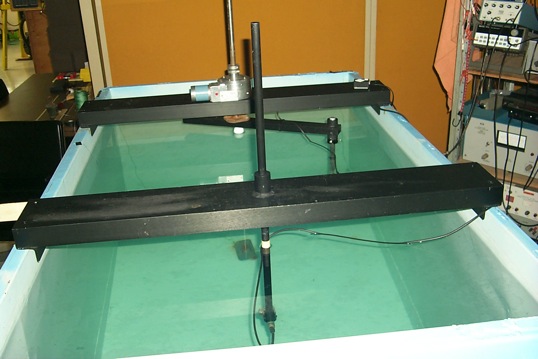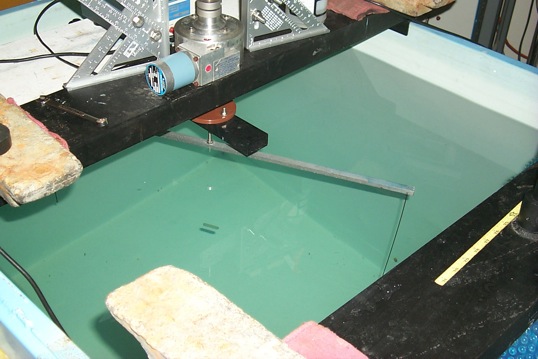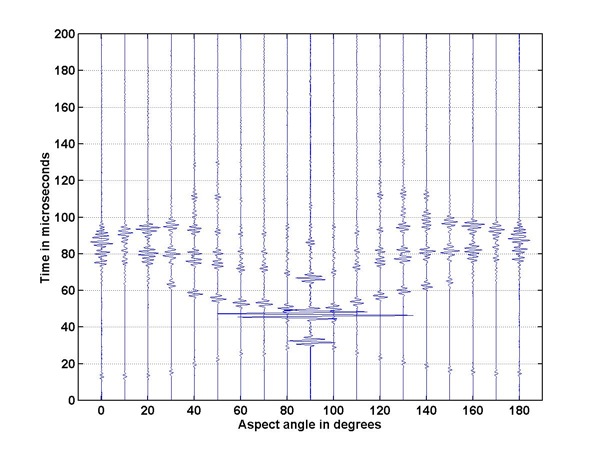Broadband
Backscattering from fluid spheres and finite
cylinders
As a side project to our thin layers work, we investigated
the use of multi-static scattering to extract data from
scatterers. The goal was to come up with an alternative to,
or an adjunct to, multi-frequency backscattering for
assessing properties of zooplankton. Some research into the
literature suggested that this should be possible. The
ultimate goal was to be able to estimate the relative
density and compressibility (or sound speed) of
zooplankters in situ.
For a beginning, I fabricated a series of spheres and
finite cylinders from RTV (actually, Tom Kleinwaks labored
long and hard to make a series of usable targets). We put
together a rig in our small test tank to hold these targets
centered on a circle about which we could rotate a
broandband transducer. A fixed column could be installed to
ensonify the target. With considerable futzing about to get
things centered, we could obtain over 160° of multi-static,
broadband scattering from these targets -- from nearly
backscattering to nearly forward scattering.

The data from the spheres was
found to be completely in accordance with the fluid sphere
model of Anderson (1950). This was expected, since some rtv
sphere data have been reported before (ref?). However, the
agreement at angles other than backscattering is believed
to be new.
The data from the cylinders was unique. The cylinders were
capped with hemispheres, which complicates the theoretical
modelling enormously. However, we used a finite cylinder
model from Zhen Ye to obtain satisfactory estimates. The
nature of the ensonifying signal -- a 2 1/2 cycle burst --
permitted the examination of the echo process inside the
scatterer as echoes arrived at distinct times.

In the plot below, the cylinder was rotated while the
transducer remained fixed; thus, all the data are
"backscattering" but at varying aspect angles for the
cylinder. In this figure, 90° represents the cylinder axis
at right angles to the line from the transducer to the
center of rotation. Each vertical line is the broadband
echo from the cylinder at that aspect angle. The incident
pulse looks very much like the first echo seen at 90°
aspect. You can see that many of the echoes consist of
basically the incident pulse, delayed by a varying amount
with aspect angle. Towards end-on aspect, these various
echoes tend to merge together, except for the specular echo
from the endcap itself.

It is relatively easy to separate specular echoes (from the closest part of the cylinder to the transducer) from echoes that appear to arise from a circumferential path around -- or a direct path through -- the cylinder. Knowing the speed of sound in the water and in RTV, one can draw pictures and trace the probable paths of sound propagation in and around the target.



